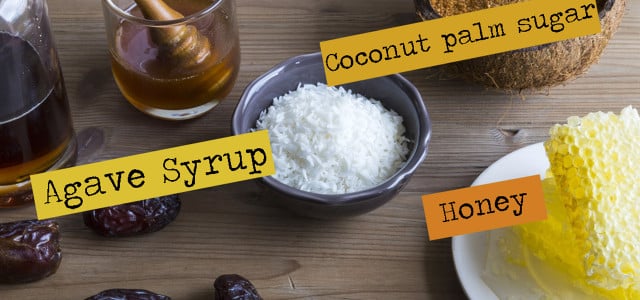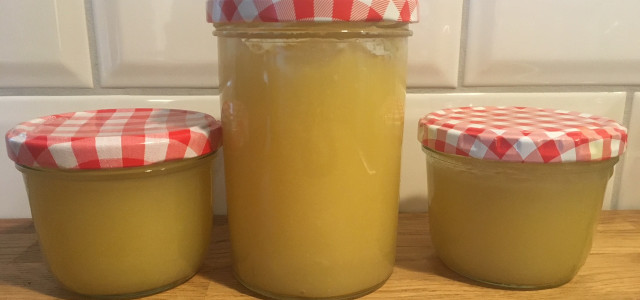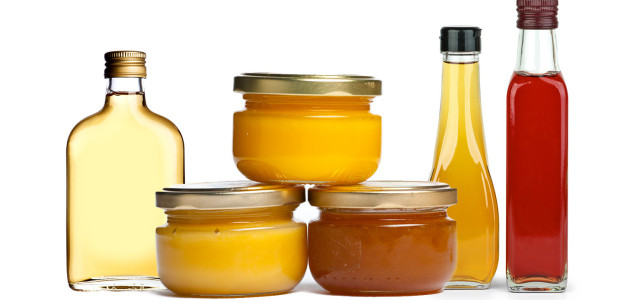Are sugar alternatives and natural sweeteners such as agave syrup, maple syrup, honey or stevia actually the healthier or eco-friendlier choice? And what’s the deal with calorie-free sugar substitutes? We’ve got answers to these questions – and they may come as quite the surprise.
Sugar is food’s new worst enemy. Many people make the choice for “healthier” food options with as little “sugar” as possible without considering where the sweetness in these foods comes from. There’s a huge hype around products touting supposed healthier sugar substitutes.
We’ve taken a closer look at a number of these supposedly healthy sugar alternatives and natural sweeteners:
- Agave syrup / agave “nectar”
- Honey
- Maple syrup
- Coconut sugar / palm sugar
- Rice syrup
- Stevia
- Xylitol / birch sugar
- Erythritol
The first question you should be asking yourself is why you want to replace sugar in the first place. Is it the calories? Then low-calorie or calorie-free sweeteners are the best choice. However, an even healthier route to take would involve consuming less sweets altogether. If it’s the sweet taste you’re looking for, then you may want to consider honey and syrups as a natural sugar substitute.
Sugar, Beet Sugar, Cane Sugar and Raw Cane Sugar
The United States is one of the world’s largest sugar producers. American sugar is primarily sourced from sugar beets. However, unlike other nations, the country has both well-established sugar beet and sugarcane industries. Beet sugar production has made up around 55-60 percent of national totals since the 2000s with sugarcane accounting for the remaining 40-45 percent. The leading sugarcane producing states are Florida, Louisiana and Texas. Sugar beets are grown over a number of regions encompassing eleven states.
White sugar from sugar beets is made up of 100 percent sucrose. Cane sugar also contains 100 percent sucrose and only differs from beet sugar in its occasional sourcing from tropical sugarcane instead of local sugar beets. Extracting sugar from beets and sugarcane involves a comprehensive industrial process known as refining, hence the term “refined sugar”.
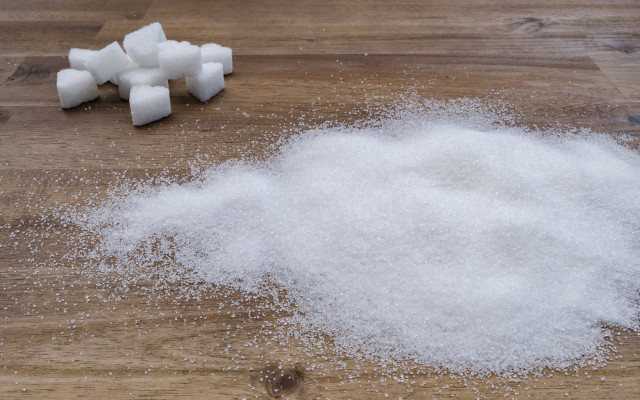
White sugar is packed full of calories and contains absolutely no vitamins whatsoever. Sugar’s color also says little about its benefit to your health. More often than not the brown sugar you find on store shelves won’t be raw cane sugar – which, when unrefined, still contains mineral rich molasses – but rather colorized white sugar.
Our tip: The less sugar, the better. The color of sugar doesn’t always have much to say about the actual taste. Those intent on using sugar as a sweetener should make the choice for regionally produced and organic sugar from sugar beets. In order to be extra sure you’re buying a product that hasn’t undergone numerous unnecessary and energy-intensive industrial processing steps, be on the lookout for “unrefined” sugar.
1. Agave Syrup or Agave “Nectar”
Currently experiencing a boom in popularity, the natural sweetener agave syrup can be found on supermarket shelves everywhere around the United States. Instead of refining, the extraction process involves removing the juice from the Mexican agave plant and cooking it into a syrupy liquid similar in consistency to honey. The darker the color, the more extensive the processing steps involved and the more intense the caramel-like aroma of this natural sweetener will be.
This sugar substitute gets its sweetness from a mixture of fructose (“fruit sugar”) and glucose (“corn sugar”). Agave syrup has one of the lowest glycemic index (GI) values among natural sweeteners. This, coupled with its relatively high mineral content (as is the case with all unrefined products) has led to its praised reputation as the “healthy” sugar alternative.
Once again, the following holds true: those who want to profit from the potential health benefits of this natural sweetener need to drink it by the jug. In turn, exceeding the recommended serving size has disadvantages of its own.
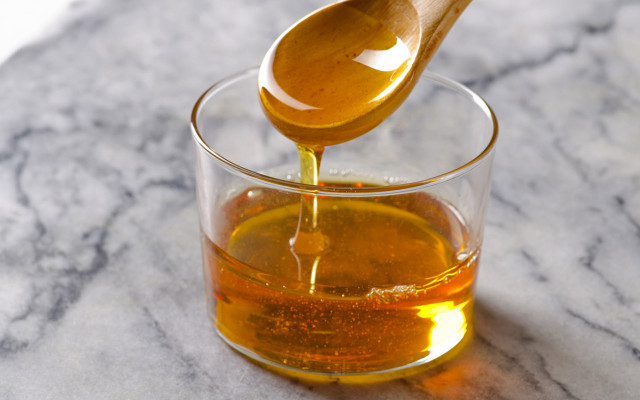


The relatively high concentration of fructose in agave syrup is its most notable downside. Not everyone tolerates fructose the same way (as with hereditary fructose intolerance or fructose malabsorption) and its consumption at high doses over time can lead to a number of metabolic syndromes (i.e. obesity, high blood pressure, elevated blood fat levels and type 2 diabetes/insulin resistance).
Agave syrup’s consistency makes it a great natural sweetener for drinks, but not for baking. The high fructose concentration causes quick and intense browning and prevents doughs from retaining their usual robustness compared to using regular household sugars.
Our tip: Although agave syrup indeed possesses a remarkably low glycemic index, its high concentration of fructose leaves it no better an alternative than other common sugar substitutes and natural sweeteners. In addition, agave syrup is also imported from abroad, thus it’s not exactly the most environmentally sensible alternative either.
2. Honey
Prior to current sugar production methods from sugar beets, honey was one of the only natural sweeteners on the market. It contains up to 85 different types of sugar (fructose, glucose, saccharose, maltose and other multiple sugars). This leaves honey just as unhealthy as normal sugar with comparable calorie levels.
What makes honey different from refined granulated sugar is its additional nutrient content: honey contains pollen, nutrients, proteins, enzymes, amino acids, vitamins and its natural color and flavoring substances.
Alongside its function as an anti-inflammatory, honey’s light antibacterial properties make it a popular natural home remedy for colds and throat aches when combined together with hot liquids. (See also: Homemade Cough Syrup: An Onion Juice and Honey Natural Cough Remedy. If you take a close look at the actual nutrients contained in half a cup of honey you’ll find: you’ll probably only receive any significant health benefit from honey after drinking an entire tub of it.
In addition to this, many of honey’s nutritional benefits are lost once heated to over 100°F. It makes little sense to start baking or mixing warm drinks with honey instead of sugar solely because this natural sweetener is the “healthier” option. It is nonetheless still great as a spread atop your morning toast or as a natural sugar substitute for its irreplaceable flavor.
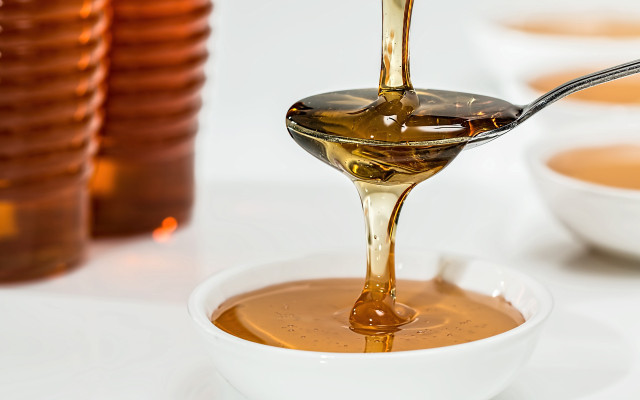


When it comes to baking, honey doesn’t have all too much to offer. Its high fructose sugar content makes baked goods brown quicker. This leaves recipe baking times less accurate and makes the whole operation a hassle.
Honey also doesn’t have much going for it in way of calories. It primarily consists of fructose, glucose and water, thus leaving its calorie content at similar levels to those of regular sugar: 5 tablespoons / 3,5 oz. of honey have around 280-300 calories which is approximately 100 calories less than sugar’s 400 calories for the same amount. Due to honey’s water content, this natural sweetener packs less sweetness with fewer calories, which is why its relative “calorie advantage” is quickly compensated for by using more at a time.
When buying honey, finding a locally produced brand is key. It doesn’t make all too much sense to buy honey shipped in from overseas when there’s a perfectly good source right around the corner.
Our tip: Honey goes great as a spread across your morning toast, however it doesn’t make for the best sugar substitute. Buying the natural sweetener directly from a beekeeper in your neighborhood ensures you’ve got a product that is as fresh as could be and has a small CO2 footprint.
3. Maple Syrup
Maple syrup is often used as a sugar substitute in a variety of products such as teas, desserts and baked goods. The first step in the production process is tapping a sugar maple tree by drilling holes in their trunks and collecting the exuded sap. The sap then undergoes further processing through heating in order to evaporate much of the remaining water content, leaving behind a concentrated syrup. The yield from approximately 100 gallons of sap is around 2,5 gallons of maple syrup – a product primarily consisting of sucrose and fructose sugars.
Common store-bought maple syrup contains around 45 percent water and tends to fare much better compared to honey and other sugars when it comes to calories: 1/3 cup of maple syrup carries around 260 calories. Nonetheless, maple syrup is therefore not any healthier than sugar as the lower calorie count can be easily attributed to its higher water content. In order to obtain the same sweetness as sugar, you’ll simply need a bit more maple syrup, and with more syrup come more calories.



All maple syrups are identical in maple sugar content and are graded solely based on color – and thus also taste. The darker the color of this natural sweetener, the more intense the flavor. The graded color classes put forth by the USDA and recently adopted by Canadian producers span four A grades and commercial and processing labels: Grade A Golden, Grade A Amber, Grade A Dark and Grade A Very Dark. As is the case with many other plant-based syrups, maple syrup contains minimal amounts of minerals, trace minerals and secondary phytochemicals.
Maple syrup is primarily produced in Canada with the province of Quebec the country’s largest exporting region. However, this natural sweetener is also produced in the United States. Vermont is the largest maple syrup producer in the nation. Depending on where you’re buying from, transportation routes for maple syrup can get pretty lengthy. Although Canadians are the most well-known experts of the maple syrup trade, products made in the U.S.A. taste just as good – and have travelled less to get here. Key when buying maple syrup is keeping tabs on where yours came from.
Our tip: Pancakes without maple syrup are simply unthinkable. Plus, maple syrup simply goes great on tons of other tasty treats such as waffles – and even ice cream. Unfortunately, as a natural sugar substitute, this sweet sauce doesn’t prove any healthier than household sugar. This is in addition to potentially long transportation routes and resulting CO2 emissions.
4 & 5. Coconut and Palm Sugars
Up until a couple years ago, coconut sugar – also known as coconut palm sugar – was still relatively unknown and pretty tricky to track down. Today it’s a growing trend. Dubbed a “luxury sugar” due to its high prices, this natural sweetener is made from the sap of flower buds from the coconut palm tree. When it comes to flavor, this brown colored sugar tastes less like coconuts than it does like caramel.
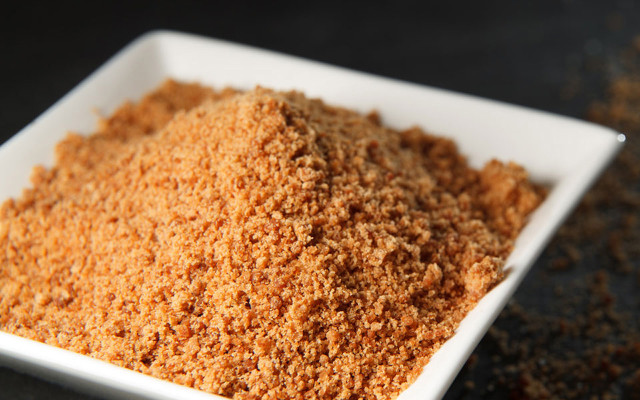


The most common marketing claim for palm sugar as a healthy sugar alternative is its low glycemic index. According to advertiser’s claims, this natural sweetener raises blood sugar levels only gradually, thus leading to less insulin uptake which prevents food cravings. Others promise that this natural sugar substitute contains more vitamins and minerals – take these promises with a grain of salt.
6. Rice Syrup
You’ll most likely also find rice syrup among agave syrup, maple syrup and other natural sugar substitutes at the grocery store. A product of Japan, this natural sweetener also goes by the name rice honey. It has a mild taste and slight nutty hint to it.
Rice syrup production begins by grinding the rice and steeping it along with saccharifying enzymes in order to break down the starches. This is followed by straining and evaporative heating to reduce the mixture down to its desired consistency.



Rice syrup primarily consists of glucose, maltose and oligosaccharides. In contrast to other common sugar substitutes, this sweetener doesn’t contain any fructose whatsoever and is therefore the best choice as a substitute for those with fructose intolerance. Then again, rice syrup does also contain calories. With a count just above 300 calories per 5 tablespoons, rice syrup indeed has less than household sugar (400 cal.), yet solely due to its water content. Rice syrup is thus less sweet than sugar which makes it easy to want to pile it on – along with the calories.
Rice syrup is a great natural sweetener for beverages, desserts and can be used for baking. However, it is important to keep the higher water content of this sugar substitute in mind when baking as you’ll need to adjust recipes accordingly.
Our tip: Even though rice is cultivated in the United States, the rice used to make rice syrup is imported in from faraway places and inevitably leaves behind a measurable CO2 footprint. Unless you see “Made in the USA” on the bottle, rice syrup doesn’t have a whole lot to do with sustainable consumption.
7 & 8. Stevia or Sugar Leaf
Stevia (stevia rebaudiana) has been cultivated and consumed on a massive scale in countries throughout South America for centuries. For generations, this sugar substitute has found use as natural sweetener in Asian countries as well. However, it was only recently permitted for sale in the United States.



Depending on the exact product in question, stevia can be up to 450 times sweeter than regular sugar. In addition, stevia is calorie-free and is metabolized without insulin, thus making it a worthy pick for those with diabetes.
Depending on their exact use, products containing stevia sold in the United States have a slightly metallic, somewhat bitter aftertaste to them. Baking with stevia can be difficult due to the fact that stevia has so little volume in comparison to sugar, despite it being stable under heat.
Please consider: If calories are your main concern, Stevia can be one of the healthier sugar alternatives for you. Still, it remains highly controversial due to the extremely comprehensive extraction process of stevia-glycosides from the leaves involved in production.
9 & 10. Xylitol or Birch “Sugar”
Categorized as a sugar alcohol, xylitol or birch sugar is known to many an “artificial sweetener”, yet in reality, i occurs naturally in a number of fruits and vegetables such as cauliflower, strawberries and raspberries, just to name a few. We even have trace amounts of xylitol in our bodies as a byproduct of carbohydrate digestion.
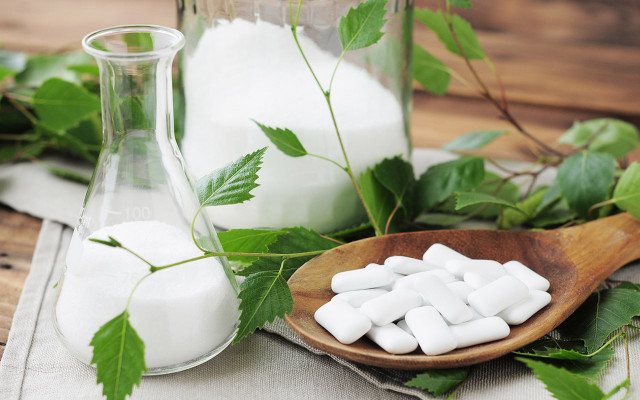


The term “birch sugar” can be misleading. Xylitol isn’t directly extracted from birch trees, rather the trees play a part in the production of the base material used in xylitol manufacture: xylan (so-called “wood gum”). Xylitol can be produced just as easily from other hardwoods as well as the leftover waste materials from straw, grain, corn and other agricultural products. First, the wood sugar xylose is produced at high temperatures with the help of a sodium hydroxide solution and sulfuric acid. In a further step, the sugar substitute xylitol is then extracted from this mixture.
Xylitol has a low glycemic index and approximately 40 percent fewer calories than household sugar. It is also particularly popular as a sugar substitute in chewing gums – especially those labeled “dental-care chewing gums” – as it prevents tooth decay and dry mouth. Similar to all other sugar alcohols, xylitol in high doses may result in laxative effects and cause bloating.
Please consider: The sugar substitute “birch sugar” usually isn’t made form birch, but rather other agricultural byproduct materials. This may mean this dental-friendly natural sweetener could potentially contain genetically modified corn. This considered, and in part due to the massive amount of energy required in the production of xylitol, we recommend avoiding this sweetener.
11. Erythritol
Another supposedly healthy sugar alternative and sugar alcohol is erythritol. In contrast to xylitol, this sweetener is completely calorie-free. Erythritol has around 70 percent the sweetness of sugar, which can be compensated for when used in higher amounts. This sugar substitute is naturally occurring in ripe fruits, in some cheeses and wines and is a good pick for diabetics and those trying to control their overall calorie intake – especially those who reject artificial sweeteners such as cyclamate, saccharin, sucralose or aspartame.
As is the case with other sugar alcohols, too much erythritol can lead to bloating and diarrhea. Overconsumption of this sweetener requires a significantly larger amount than with other sugar substitutes such as xylitol, sorbit, maltite, lactite or isomalt. This makes erythritol particularly popular as a natural sweetener.



At the industrial level, erythritol is produced through fermentation of carbohydrates from mushrooms. Since this sugar substitute can be made from organically produced sugars or corn, but also from genetically modified mushrooms, it is also available for purchase with the USDA organic seal.
Our tip: When it comes to calorie-free sugar substitutes, erythritol is a relatively good alternative. Nonetheless, keep a watchful eye out for the USDA organic seal to ensure what you’re buying doesn’t contain or has used GMOs in production.
Do We Need Beet and Cane Sugar?
In essence, nobody really needs sugar. Your body produces its own sugar through digestion of complex carbohydrates (grain crops). This process is completely natural, and, when you consume whole grain products, also raises your blood sugar levels.
The WHO recommends limiting calories from sugar to 5-10 percent of you daily calorie intake. For adults, that equates to approximately 6 to 10 teaspoons of sugar a day. In the United States, average daily sugar consumption per persons totals around 17 teaspoons of sugar – often due to hidden sugars in baked goods, sodas, frozen dinners and other industrially produced food items alongside honey and sugar additives.
Read more: Healthy Grocery List: 6 Unhealthy Foods to Cross Out
The majority of the so called “healthy” or “natural” sugar substitutes out there such as honey or coconut sugar aren’t exactly all too healthy. The promotionally effective vitamin and mineral content touted by marketers only really adds up to a nutritionally substantial amount after you’ve already drastically exceeded the recommended serving size – in other words: once you’ve made the “healthy” sugar substitute unhealthy again.
Most sugar substitutes may prove slightly “more nutritious”, however, they’ve also probably required a longer journey to get to your local supermarket. This leaves the marginal nutritional benefit of sugar substitutes poor in proportion to the actual CO2 footprint of shipping these sweeteners across the globe.
Calorie-Free Sugar Substitutes
Sugar is simply an unhealthy companion to your everyday routine. But what if you just have to have it sweet? You don’t want to go without that slight sweetness in your tea or fruit salad but still want to drop a few calories while keeping health risks to a minimum? These alternatives are calorie-free:
- Stevia is a lot sweeter than household sugar, has no calories and isn’t responsible for cavities. However, the extraction of this white powder from leaves is only possible with chemicals – which is why you won’t find organic stevia anywhere on the market. Another point to consider is that a lot of products containing stevia also contain regular sugar to mask its distinct taste.
- Xylitol has 40 percent less calories than household sugar while it isn’t much sweeter and serves well as a sugar substitute. It also has less of an effect on blood sugar levels than normal sugar and as prevents cavities.
- Erythritol is calorie-free and has less of an impact on blood sugar and insulin levels than other sugar substitutes. Compared to other sugar alcohols, side-effects such as diarrhea and flatulence are less common. Yet, it’s just not as sweet as sugar. Erythritol mixed together with sugar is marketed as “Xugar”.
- Saccharin is 300 to 700 times sweeter than saccharose and, historically speaking, the world’s first ever sweetener. Although saccharin was found to cause cancer in animal tests, its sale as an additive in numerous food products continues to be legal. Just to be on the safe side, it’s probably a good idea to avoid saccharin.
- Aspartame, Acesulfame and other artificial Substitutes: Aspartame tastes less artificial than saccharin. The sugar substitute has been approved for consumption by the FDA since 1981 and is one of the most rigorously tested food ingredients worldwide. Aspartame and acesulfame are common additives to sweetened drinks. Other popular sweeteners are cyclamate and thaumatin, which are often used in combination with acesulfame. This complementary use is due to the bitter aftertaste of the non-natural sugar substitute. All these products undergo intense chemical processing.
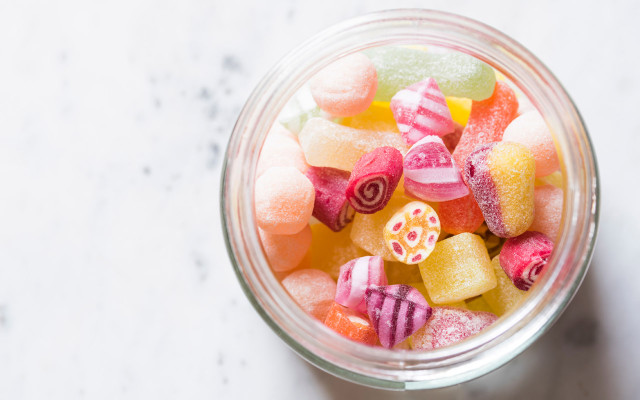


Do Cane and Beet Sugar Substitutes Help With Sugar Addiction?
Sugar substitutes such as xylitol or stevia play their part in keeping you from consuming regular household sugar. In the long-term, however, these sugar substitutes have less potential in helping you kick the habit for good. Whenever normal sugar comes around, we’ll have a go at it – we’re simply hard-wired to do so. A more adequate approach involves adjusting your diet step-by-step until you’ve completely or substantially cut sugar out of your daily eating routing.
Are Sugar Substitutes Vegan?
Honey is never vegan, yet the majority of the remaining natural syrup sugar substitutes out there are. Many common store-bought additives are vegan too, however they’re also often chemically manufactured in a lab. Before buying any of these, it’s probably best to do some research of your own or ask an informed sales associate.
Sugar Substitutes: Our Recommendations
It has been in no way our intention to talk you out of adding a bit of honey to your tea or maple syrup to your pancakes. Nevertheless, a lot of people do believe natural sugar substitutes such as agave syrup or palm syrup to be the healthier option. In essence, these products are merely sugar in a new form and impact the environment in various, previously unknown ways. For those looking to take a healthier route, it makes more sense to limit consumption of sweetened foods and drinks overall than bend over backwards looking for an adequate sugar substitute.
Just need it sweet? The best choice is honey from the local beekeeper or sugar from organic sugar beets. Supermarkets often have their own collection of organic, locally-sourced sugars on display.
If you’re diabetic, try to avoid artificial sweeteners or “healthy sugar substitutes” with a low glycemic index altogether and instead sweeten with erythritol produced with organic ingredients.
Read on:
- Healthy Grocery List: 6 Unhealthy Foods to Cross Out
- Life without Plastic: Easy Tips for Everyone
- Golden Milk Recipe: Health Benefits of the Turmeric Latte
This article was translated from German to English by Evan Binford. You can view the original here: Ahornsirup, Honig, Agavendicksaft & Co.: die Wahrheit über Zuckerersatz.
** Links to retailers marked with ** or underlined orange are partially partner links: If you buy here, you actively support Utopia.org, because we will receive a small part of the sales proceeds. More info.Do you like this post?






